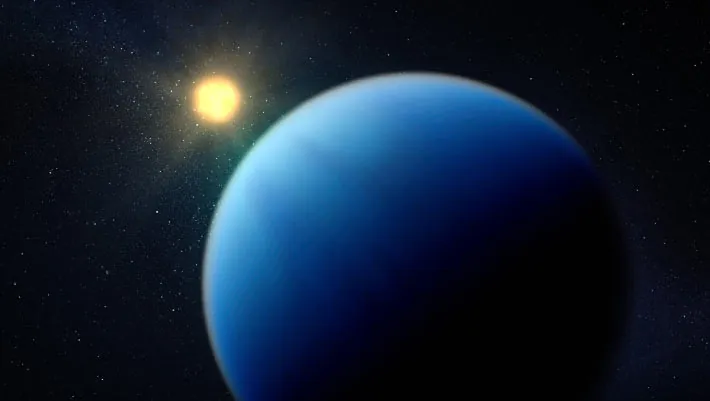
Astounding Discovery: James Webb Unveils Secrets of Sub-Neptune TOI-421b's Atmosphere!
2025-05-06
Author: Jia
NASA's Webb Telescope Makes Groundbreaking Discovery!
In an exciting leap for astronomy, the James Webb Space Telescope has successfully captured the atmospheric composition of TOI-421b, a unique sub-Neptune exoplanet located 245 light-years away in the constellation Lepus. These intriguing worlds are smaller than gas giants and come with their own set of mysteries—until now!
What Makes TOI-421b So Unique?
TOI-421b orbits a solar-type star, known as BD-14 1137, which is about 10 billion years old. This sub-Neptune boasts a radius 2.65 times that of Earth and an extraordinary equilibrium temperature of a blistering 727 degrees Celsius (1,340 degrees Fahrenheit). Unlike many other celestial bodies of its kind, TOI-421b stands out with a clear atmosphere, allowing scientists to delve deeper into its composition.
Overcoming Challenges: The Quest for Clarity
Previously, astronomers faced significant hurdles in studying sub-Neptunes. Many appeared shrouded in haze and clouds, leading to flat-line spectra that hindered the deciphering of their atmospheres. This frustrating phenomenon made it seem that the chemical makeup of these planets remained forever out of reach.
Enter astronomers like Brian Davenport from the University of Maryland, determined to shed light on these enigmatic worlds. With Webb's advanced technology, they aimed to explore TOI-421b, suspected to be a candidate free from haze due to its exceptionally high temperature.
The Surprising Results: Water, Carbon Monoxide, and a Hydrogen Surprise!
The results were nothing short of astonishing. Researchers discovered water vapor alongside potential traces of carbon monoxide and sulfur dioxide. However, methane and carbon dioxide were notably absent, leaving them to theorize about the presence of a significant amount of hydrogen in the atmosphere—a revelation that caught them off guard!
Kempton explained, "We initially believed that sub-Neptunes observed by Webb would have heavier atmospheres. Discovering the opposite suggests TOI-421b may have evolved in ways we hadn't previously considered." This revelation aligns TOI-421b's gaseous makeup more closely with that of gas giants in our solar system, hinting at unique formation processes.
A New Era of Exoplanet Exploration!
The findings from this study, published in the Astrophysical Journal Letters, mark a pivotal moment in the exploration of sub-Neptunes. As Davenport eloquently stated, "With Webb, we can finally glimpse the true nature of these elusive planets, expanding our understanding of the universe one discovery at a time."
As we continue to probe deeper into the cosmos, who knows what other secrets the stars may hold?



 Brasil (PT)
Brasil (PT)
 Canada (EN)
Canada (EN)
 Chile (ES)
Chile (ES)
 Česko (CS)
Česko (CS)
 대한민국 (KO)
대한민국 (KO)
 España (ES)
España (ES)
 France (FR)
France (FR)
 Hong Kong (EN)
Hong Kong (EN)
 Italia (IT)
Italia (IT)
 日本 (JA)
日本 (JA)
 Magyarország (HU)
Magyarország (HU)
 Norge (NO)
Norge (NO)
 Polska (PL)
Polska (PL)
 Schweiz (DE)
Schweiz (DE)
 Singapore (EN)
Singapore (EN)
 Sverige (SV)
Sverige (SV)
 Suomi (FI)
Suomi (FI)
 Türkiye (TR)
Türkiye (TR)
 الإمارات العربية المتحدة (AR)
الإمارات العربية المتحدة (AR)